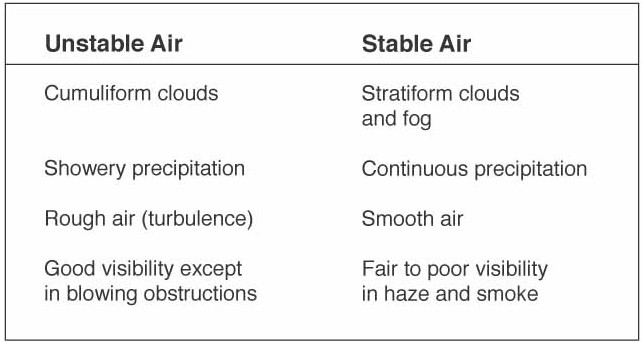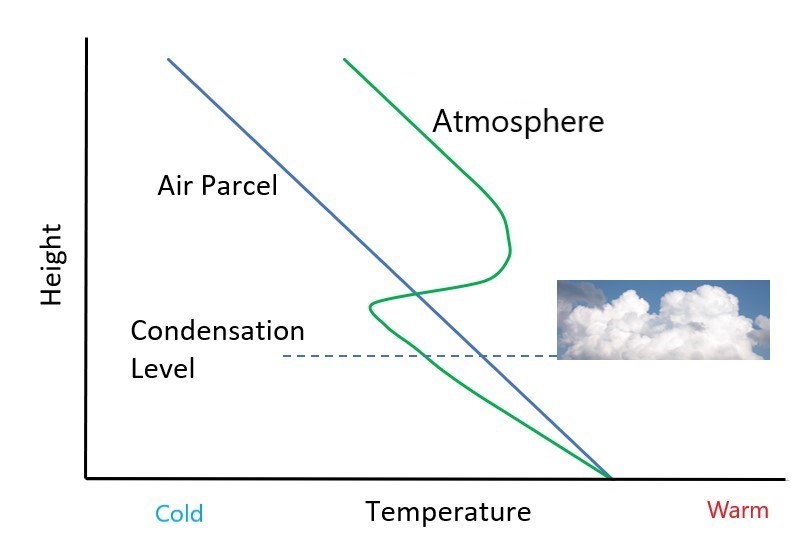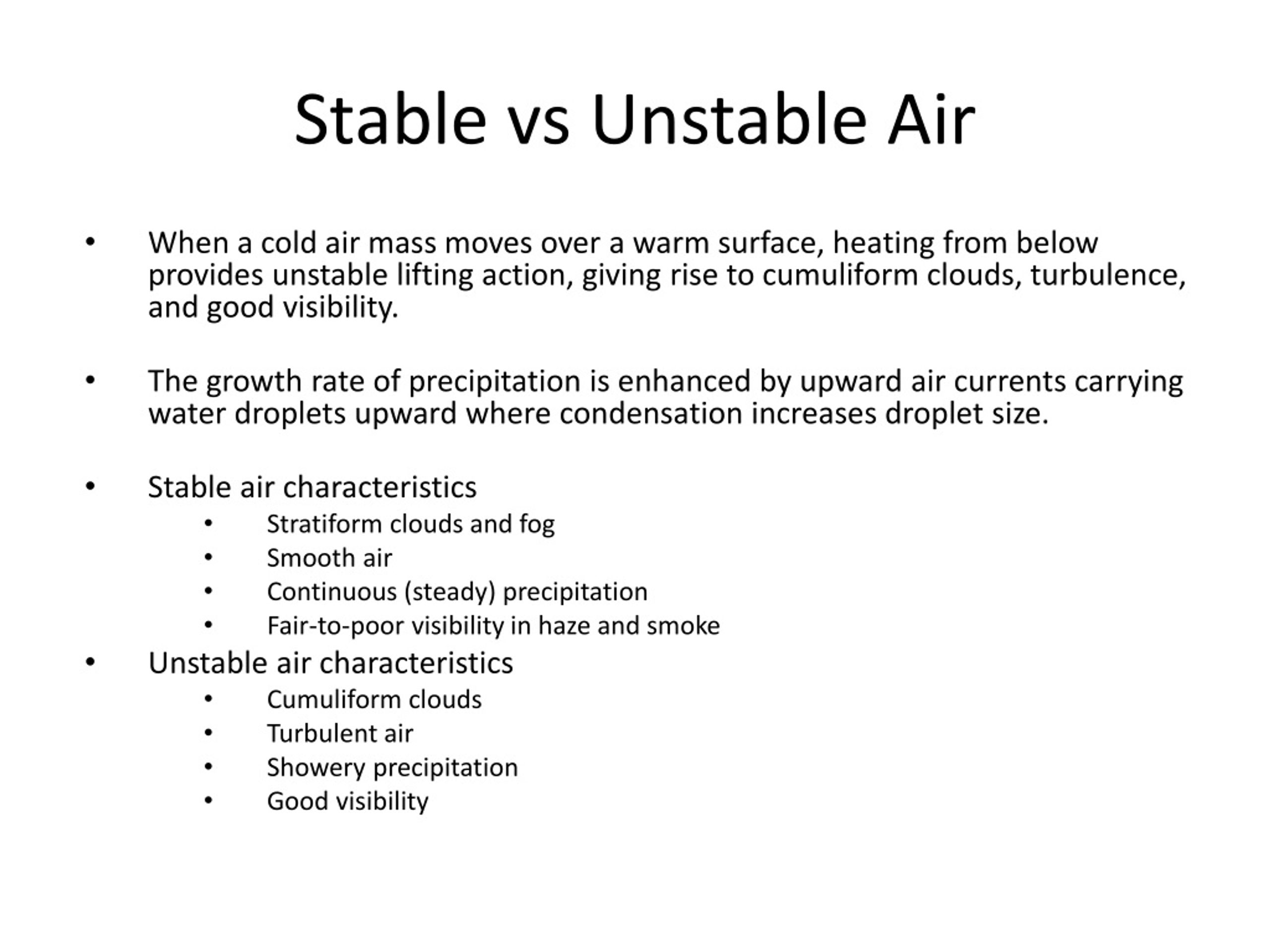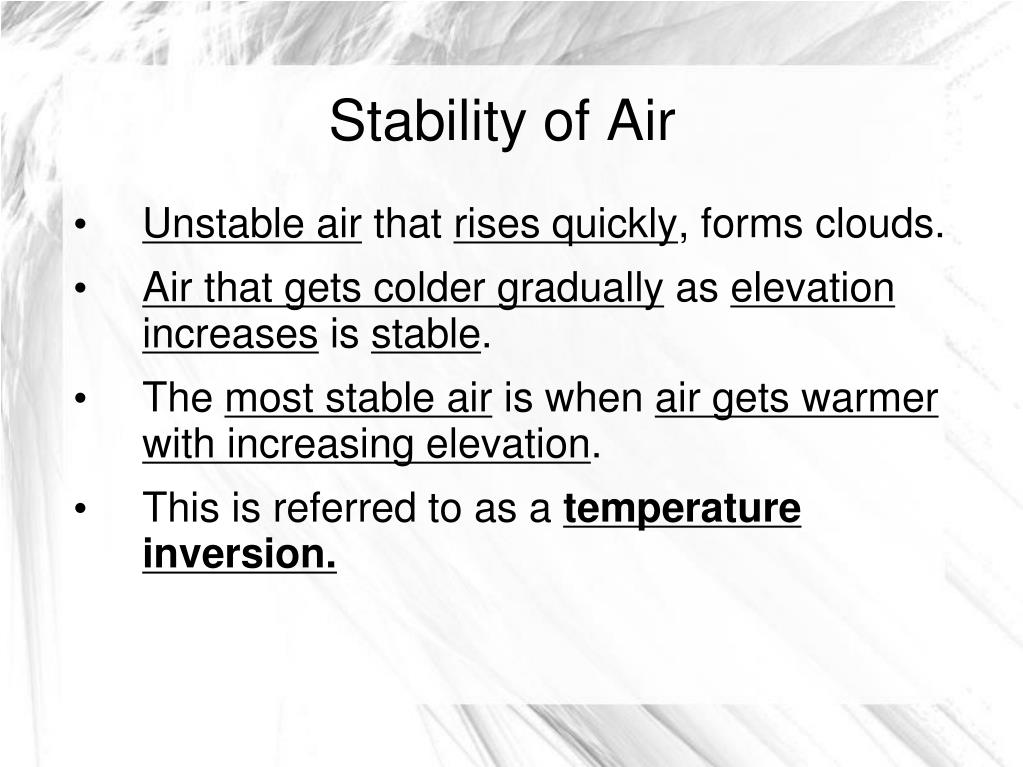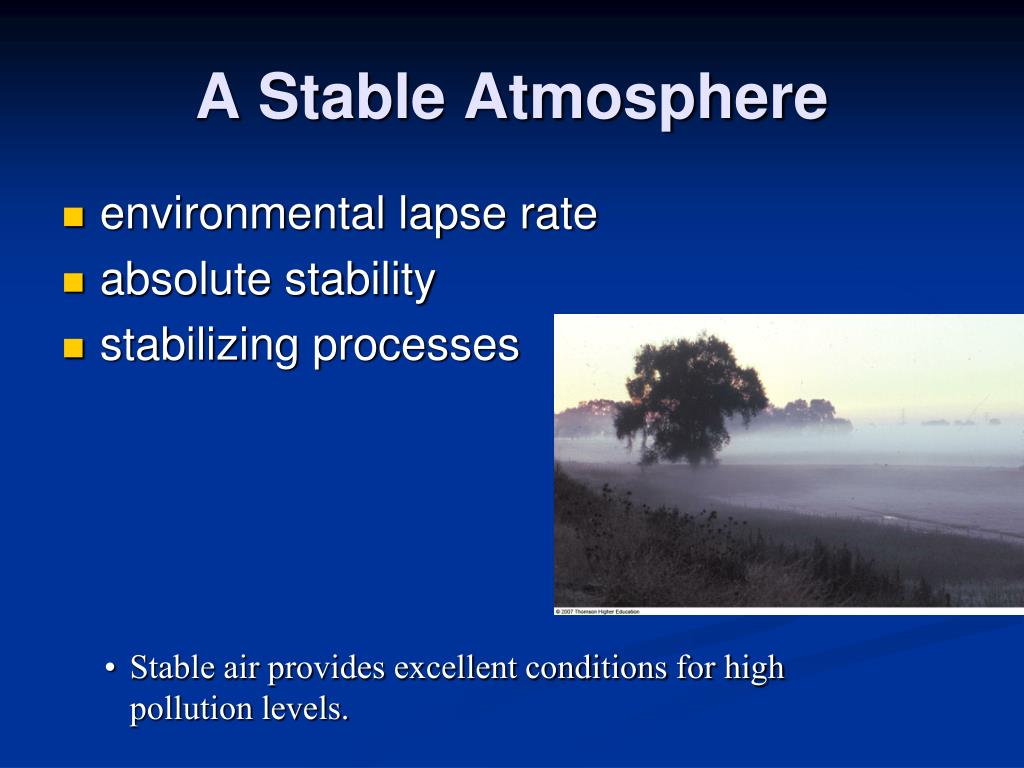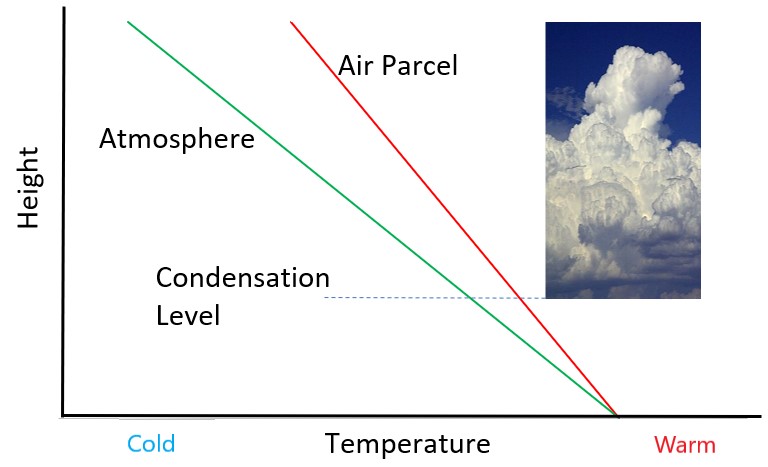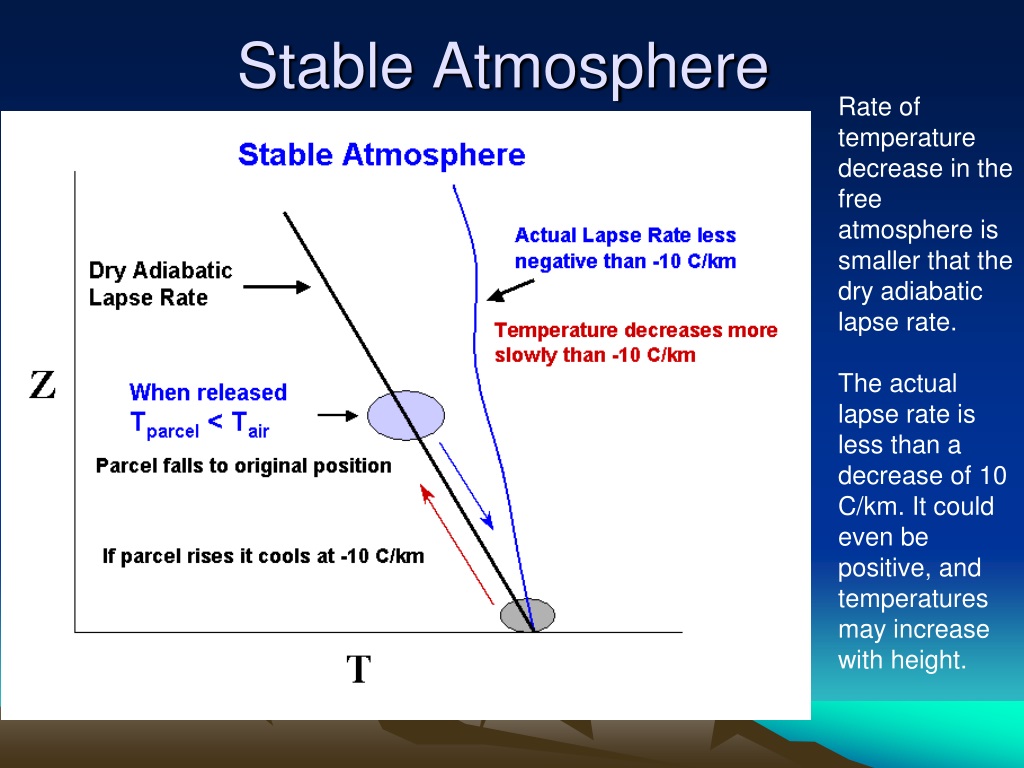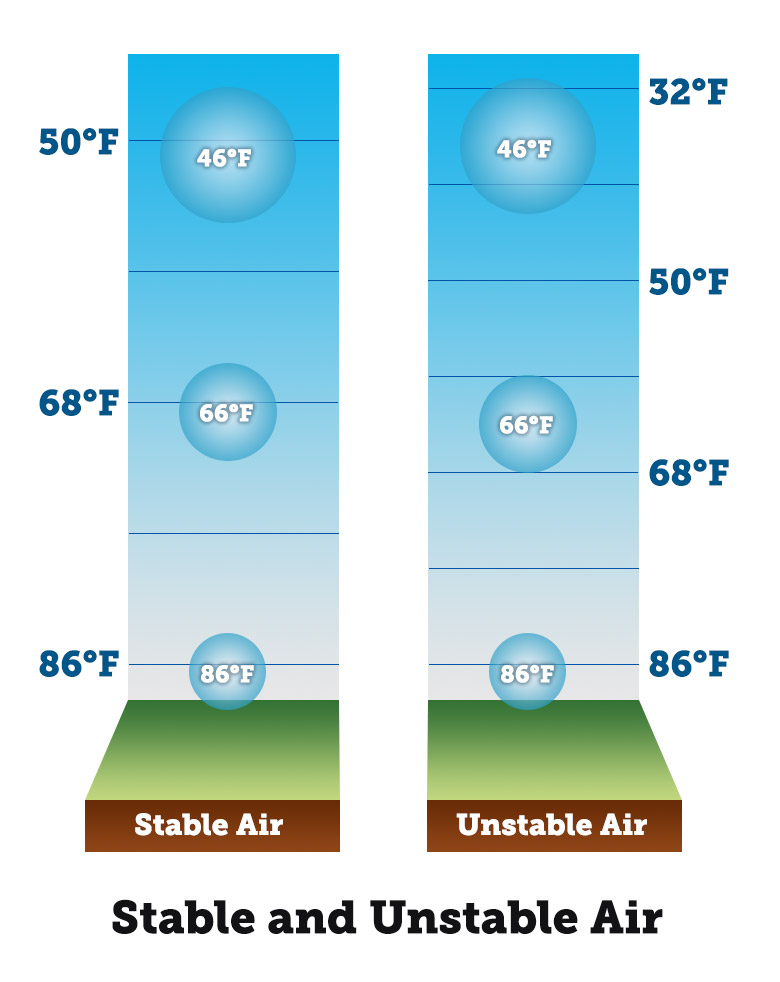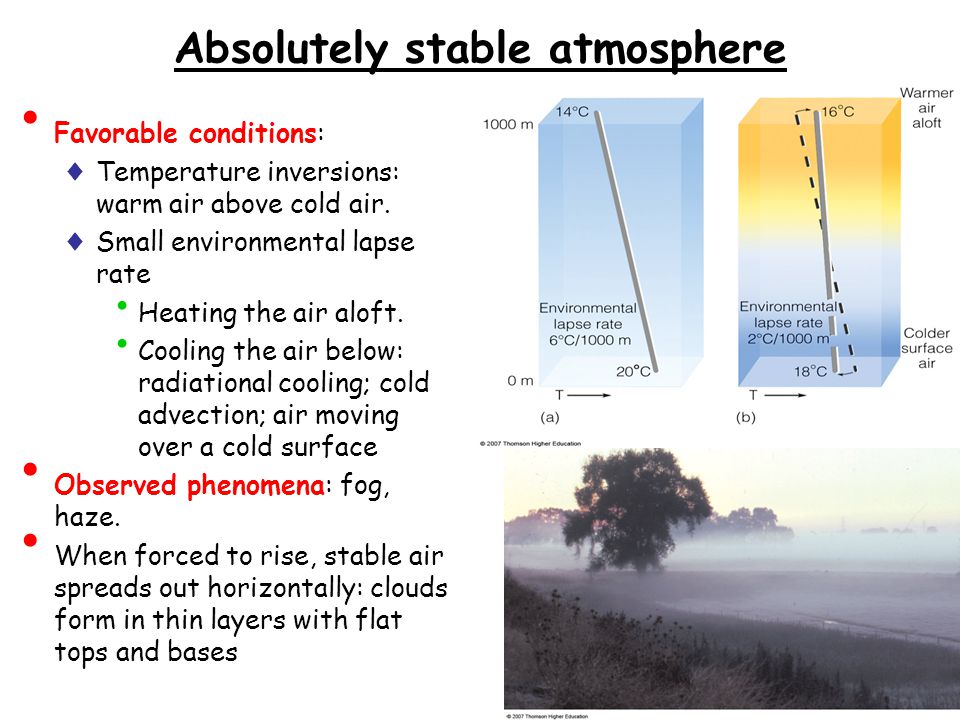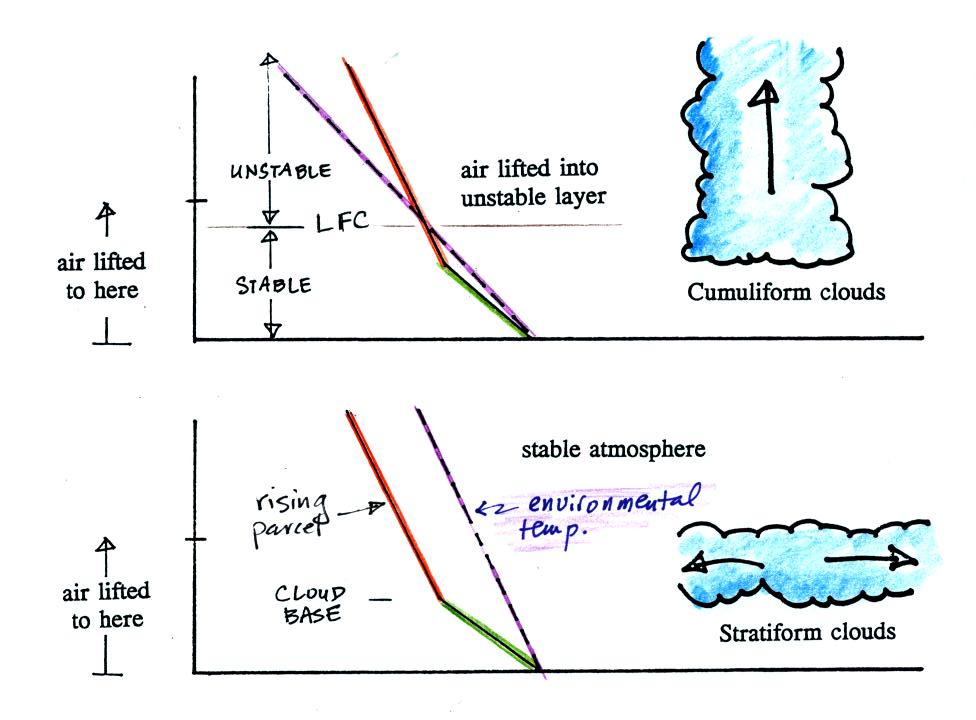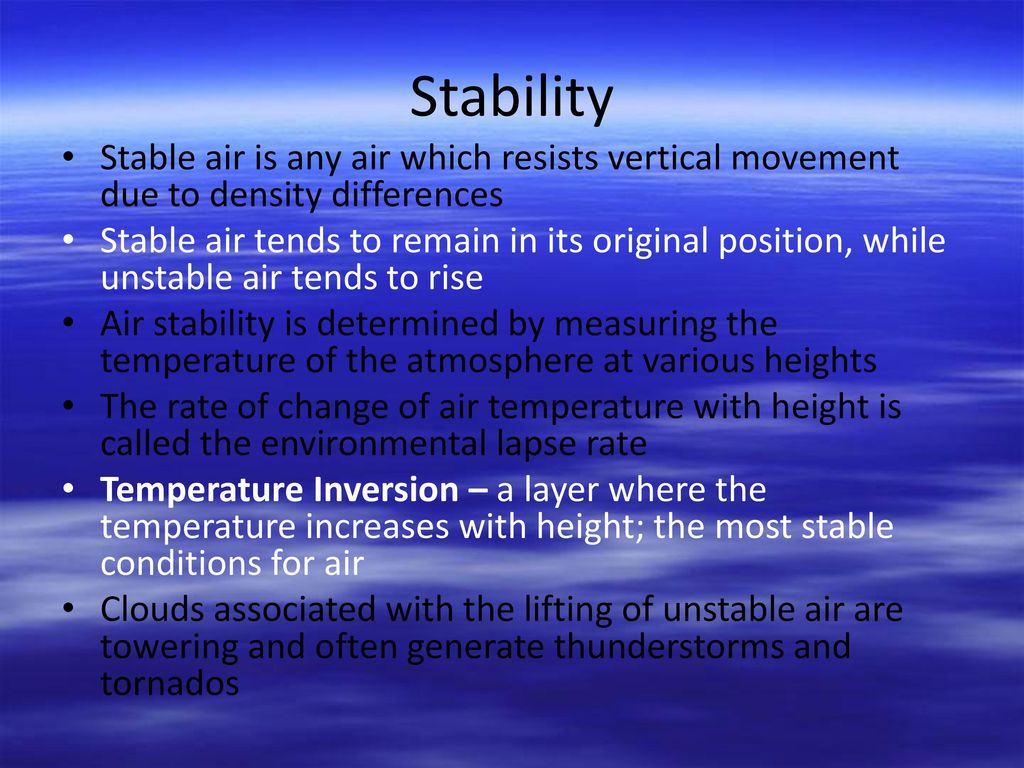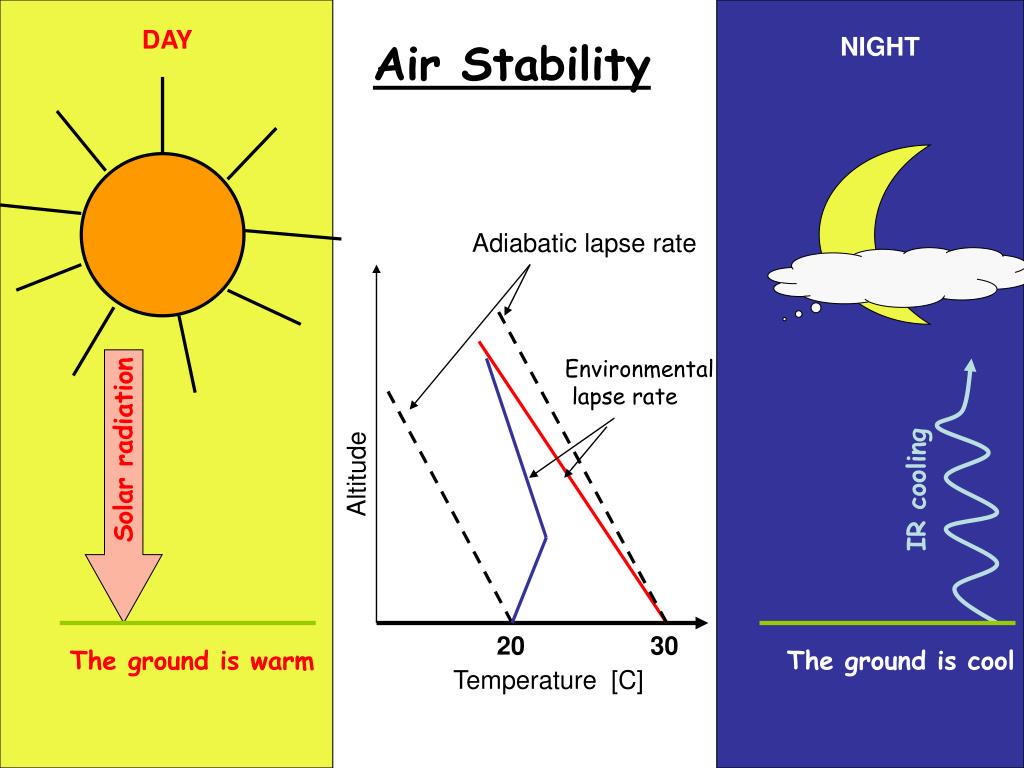What Are The Characteristics Of Stable Air

Urgent weather patterns are developing across the nation, demanding immediate attention to understand stable air conditions. Stable air, marked by its resistance to vertical movement, significantly impacts weather phenomena, influencing visibility, precipitation, and overall atmospheric conditions.
Understanding stable air is critical for accurate weather forecasting and hazard mitigation. This article details the characteristics of stable air, offering essential knowledge for professionals and the public alike.
Key Characteristics of Stable Air
Stable air is defined by its tendency to resist upward or downward motion. This stability arises from the temperature profile of the atmosphere.
Temperature Inversion
A temperature inversion is a hallmark of stable air. Instead of the typical decrease in temperature with altitude, an inversion occurs when temperature increases with height.
This creates a "lid" effect, preventing air parcels from rising and leading to stagnant conditions.
Limited Vertical Mixing
Due to its inherent resistance to movement, stable air exhibits minimal vertical mixing. Pollutants and moisture are trapped near the surface, impacting air quality and visibility.
This lack of mixing contrasts sharply with unstable air, where rapid vertical motion promotes turbulent conditions.
Stratiform Clouds and Poor Visibility
Stable air often favors the formation of stratiform clouds. These clouds are flat, layered, and typically cover a wide area.
Additionally, reduced visibility is common in stable air due to the accumulation of pollutants and moisture near the ground, potentially leading to hazardous driving conditions.
Smooth Airflow
Aircraft experience smooth airflow in stable air. The absence of vertical currents means less turbulence and a more comfortable flight.
This contrasts with the bumpy conditions often associated with unstable air and convective activity.
Light or No Precipitation
Stable air is generally associated with light precipitation or no precipitation at all. The lack of upward motion inhibits the development of strong convective clouds.
Any precipitation that does occur tends to be drizzle or light rain, often persistent and widespread.
Factors Contributing to Stable Air
Several factors can contribute to the formation and maintenance of stable air conditions.
Radiational Cooling
Radiational cooling of the Earth's surface, especially on clear nights, can create a surface temperature inversion. The ground cools rapidly, chilling the air immediately above it.
This process is particularly effective in areas with light winds and clear skies.
Subsidence
Subsidence, or the sinking of air, warms and dries the air aloft. This can strengthen or create a temperature inversion.
Areas under the influence of high-pressure systems often experience subsidence, leading to stable air conditions.
Advection
Advection, the horizontal transport of air, can also influence stability. Warm air moving over a cold surface can stabilize the lower atmosphere.
Similarly, cold air moving over a warm surface can destabilize the atmosphere.
Impacts and Implications
The presence of stable air has significant implications for various sectors.
Aviation
Stable air generally provides smooth flying conditions but can also lead to reduced visibility, especially near airports. This reduced visibility may require pilots to implement instrument landing procedures.
Pilots should be aware of potential temperature inversions that could impact aircraft performance.
Air Quality
Stable air exacerbates air pollution problems. Pollutants become trapped near the surface, leading to higher concentrations and potential health hazards.
Urban areas are particularly vulnerable to air quality issues during periods of stable air.
Agriculture
Frost formation is more likely under stable air conditions, especially during clear, calm nights. Frost can damage crops and impact agricultural yields.
Farmers may need to take protective measures, such as irrigating crops, to mitigate frost damage.
Data Sources
Meteorologists utilize various tools and data sources to identify and analyze stable air conditions.
Surface observations, including temperature, wind, and visibility measurements, provide valuable real-time information. Radiosondes, weather balloons that measure atmospheric conditions with height, offer detailed vertical profiles of temperature and humidity.
Satellite imagery and radar data also help to identify cloud patterns and precipitation associated with stable air.
Next Steps
The National Weather Service will continue to monitor developing weather patterns. Staying informed is crucial for all residents.
Consult local weather forecasts and advisories frequently. Prepare for potential impacts related to visibility, air quality, and frost.
